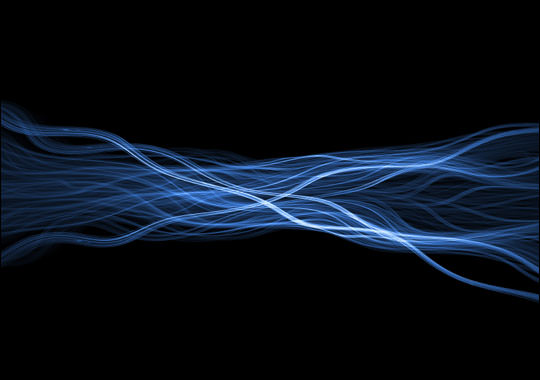During the 1930s, venerable theoretical physicist Albert Einstein returned to the field of quantum mechanics, which his theories of relativity helped to create. Hoping to develop a more complete theory of how particles behave, Einstein was instead horrified by the prospect of quantum entanglement – something he described as “spooky action at a distance”.
Despite Einstein’s misgivings, quantum entanglement has gone on to become an accepted part of quantum mechanics. And now, for the first time ever, a team of physicists from the University of Glasgow took an image of a form of quantum entanglement (aka. Bell entanglement) at work. In so doing, they managed to capture the first piece of visual evidence of a phenomenon that baffled even Einstein himself.
The paper that described their findings, titled “Imaging Bell-type nonlocal behavior“, recently appeared in the journal Science Advances. The study was led by Dr. Paul-Antoine Moreau, a Leverhulme Early Career Fellow at the University of Glasgow, and included multiple researchers from Glasgow’s School of Physics & Astronomy.

Quantum entanglement describes the phenomenon where two particles which interact with each other can remain connected, instantaneously sharing their physical states no matter how far apart they are. This connection is at the heart of quantum mechanics, even though it violates the concept of local realism and many elements of Special Relativity.
By 1964, Sir John Bell expanded on the work of previous theorists by formalizing the concept of nonlocal interaction and describing a strong form of entanglement. This would come to be known as Bell entanglement, a concept that is being harnessed for multiple scientific applications – like quantum computing and cryptography.
And yet, until now, it was never captured in a single image. As Dr. Moreau said in a University of Glasgow press release:
“The image we’ve managed to capture is an elegant demonstration of a fundamental property of nature, seen for the very first time in the form of an image. It’s an exciting result which could be used to advance the emerging field of quantum computing and lead to new types of imaging.”
For the sake of their study, the research team devised a system where a stream of entangled photos are fired from a quantum source of light. This stream then passes through a series of “non-conventional objects”, which refers to liquid-crystals materials which change the phase of the photons as they pass through.

The setup also included a super-sensitive camera capable of detecting single photons and capturing images of them. However, the camera was programmed to only take pictures if it caught sight of both one photon and its entangled twin. In so doing, the experiment effectively created a visible record of the entanglement of two photons.
The results of this study open the door to a whole new world of quantum imaging techniques that take advantage of Bell entanglements. It also has implications in the field of quantum information (i.e. quantum computing and cryptology)
Further Reading: University of Glasgow, Science Advances

